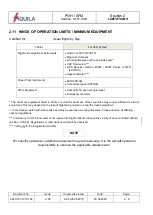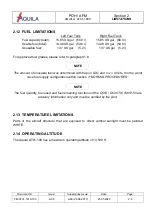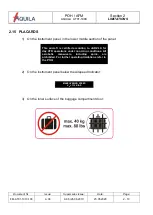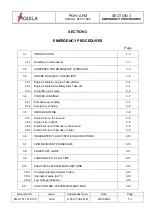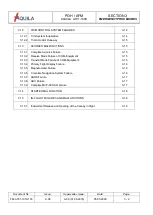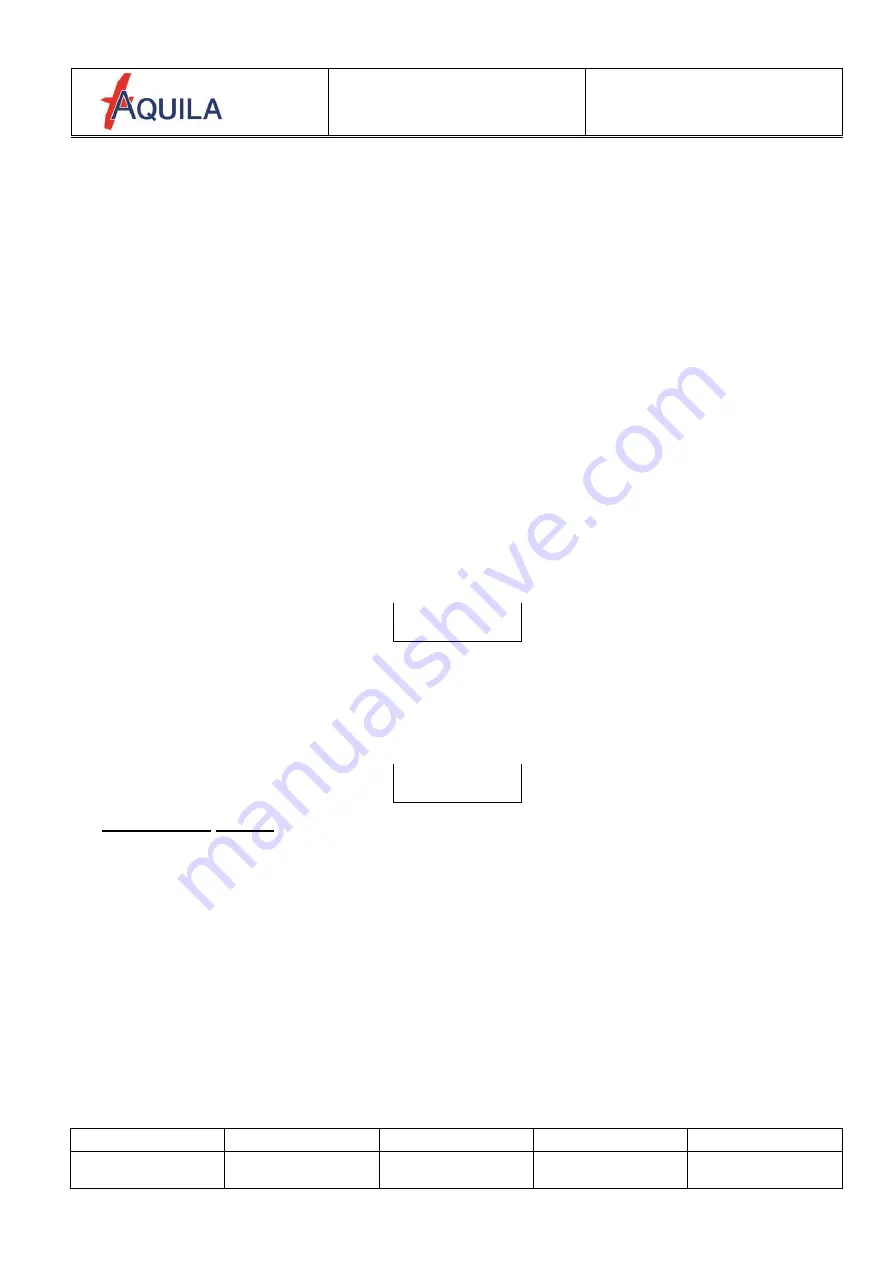
POH / AFM
AQUILA AT01-100C
SECTION 3
EMERGENCY PROCEDURES
Document Nr.:
Issue:
Supersedes Issue:
Date:
Page:
FM-AT01-1010-103
A.08
A.06 (01.06.2018)
25.05.2020
3 - 7
3.
Fuel selector valve
SWITCH to fullest or other tank
4.
Propeller control lever
START position
5.
Fuel Pump
switch
ON
6.
Ignition switch
BOTH
7.
Throttle
hot engine
OPENED 2 cm (0,8 inch)
cold engine
IDLE
8.
Choke
hot engine
PUSHED (OFF)
cold engine
PULL (ON)
When power is restored:
9.
Oil pressure
CHECK
10.
Choke
PUSHED (OFF)
11.
Electrical equipment
SWITCH ON (as required)
12.
Oil temperature
CHECK
3.4 FORCED LANDINGS
Generally the flight path should always be chosen such that, in the event of an emergency, a
suitable landing field can be reached.
CAUTION
If, after a forced landing, the aircraft flips over, an emergency hammer can be used to break
through the canopy. For this purpose an emergency hammer is attached to back of the right
hand seat.
3.4.1 Precautionary Landing
NOTE
A precautionary landing occurs when the pilot decides to discontinue flight to avoid a situation
degrading into an emergency. This way the pilot has time to make decisions and choose an
adequate landing site or divert to an airfield. The procedure for a precautionary landing is
fundamentally the same as a normal landing, which is described in Section 4.
The choice of the landing field is here of particular importance.
Deteriorating weather is a leading cause of precautionary landings.
1.
Locate Suitable Field
CONSIDER wind direction, terrain
and obstructions.
2.
Seat Belts and Harnesses
TIGHT
3.
Initiate descent
4.
If possible: Overfly landing site at a low altitude and inspect (wind direction,
terrain
and obstructions)






